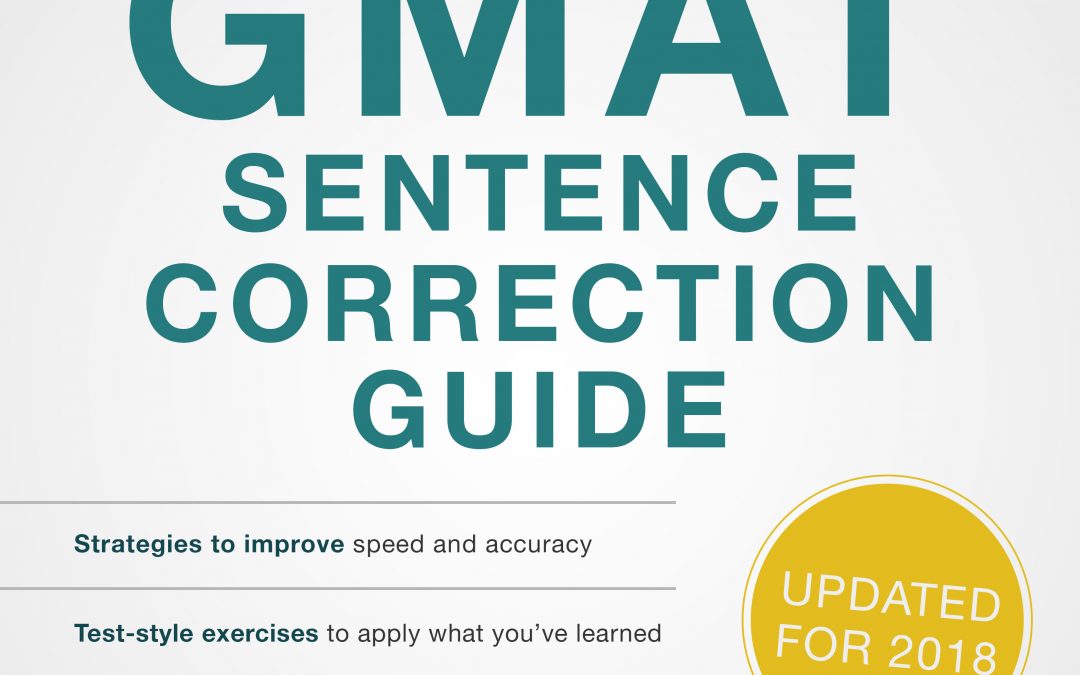I’m putting up this post because I’ve received a number of queries from people who are interested my The Complete GMAT® Sentence Correction Guide but who aren’t really sure what differentiates it from other guides on the market or whether it meets their needs. So instead of continuing to respond to people on a case-by-case, I thought I’d address some of the most common questions/concerns all in one place.
While the book does by necessity cover many of the same general concepts and strategies as the other books on the market, albeit with a different organization, there are a handful of key points that bear emphasizing.
First and most importantly: the book is designed as a “bridge” to the actual exam. All of the rules covered are derived exclusively from an in-depth study of GMAC-produced questions, and each chapter ends with a list of relevant questions from the Official Guide and Official Verbal guide. In addition, specific questions are periodically referenced during in-chapter discussions. Although there are categorized Official Guide question lists circulating online, there is no other published guide that includes this type of concept-by-concept breakdown.
Second: it teaches you the nuances of the test along with the grammar. Rather than simply state a rule, illustrate it with a handful of examples, and leave readers to figure out different applications, the book discusses the various angles from which that rule can be tested as well as various “triggers” that invite the use of certain shortcuts.
Third: the book consistently provides sentences that reflect the length, complexity, and style of those found on the GMAT. In contrast, other guides often provides sentences that are overly simplified (useful for illustrating principles but problematic in terms of transferring skills to the test) or complicated in a way that is not entirely reflective of the sentences on the actual exam (misleading and prevents you from learning and using shortcuts).
Fourth: it gives you lots of idioms, but it also tells you which ones to focus on.
Also, in another context, this might be a minor point, but in regards to the GMAT it’s very important: the book is written by a native English speaker (one with lots of experience teaching ESL students) and features standard American idioms and uses only. Unfortunately, the same cannot be said for all GMAT prep programs.
What are the drawbacks?
Well, to be blunt, it’s not exactly the sort of book you’re likely to breeze through — it covers plenty of shortcuts, but it’s not exactly a tips ‘n tricks approach. Particularly if you’re a non-native English speaker, you can expect to spend a solid few weeks with it.
In addition, the end-of-chapter exercises are not multiple choice (the three cumulative reviews are in MC format, however). Yes, this is a more labor-intensive approach, but taking away the “training wheels” forces you to really zero in any potential problems and ultimately helps you go much faster on the real test.
So the bottom line: if your Verbal score is already solid but you’ll settle for nothing less than the mid-700s, this book is pretty much designed for you. Ditto if you’re scoring somewhere in the 500s or low 600s and are willing to do what it takes to raise your Verbal score as high as it can go.
If, on the other hand, you just want to brush up on the rules tested without going into too much depth; have a limited amount of study time and need to devote to areas other than grammar; or are aiming for a score below 650 or so, you might want to look at other options.
And if you’re still not sure, you can take a look at this preview.
Finally: in case you’re wondering why Sentence Corrections are the only part of the GMAT for which I have a book, the reason is that this book came about somewhat by chance. When the SAT changed in 2016, I ended up with a huge amount of extra grammar material that happened to be generally relevant to the GMAT, and so I decided to rework it at a higher level. (Before I wrote my SAT books, I cut my teeth writing hundreds of GMAT questions for a local company, and so I was already deeply familiar with tone and style of GMAT SCs.) I’ve only just begun to venture into the graduate market; the possibility of my writing materials for other parts of the GMAT will depend on the success of this book. Writing it was a bit of an experiment, as well as a learning experience for me — I actually learned a few new things about grammar along the way — so I’m curious to see what will develop.

Impressed with your honesty in acknowledging your motivation and purpose. However, I am sure your book contains valuable insights. My conviction is based on your credibility in SAT books